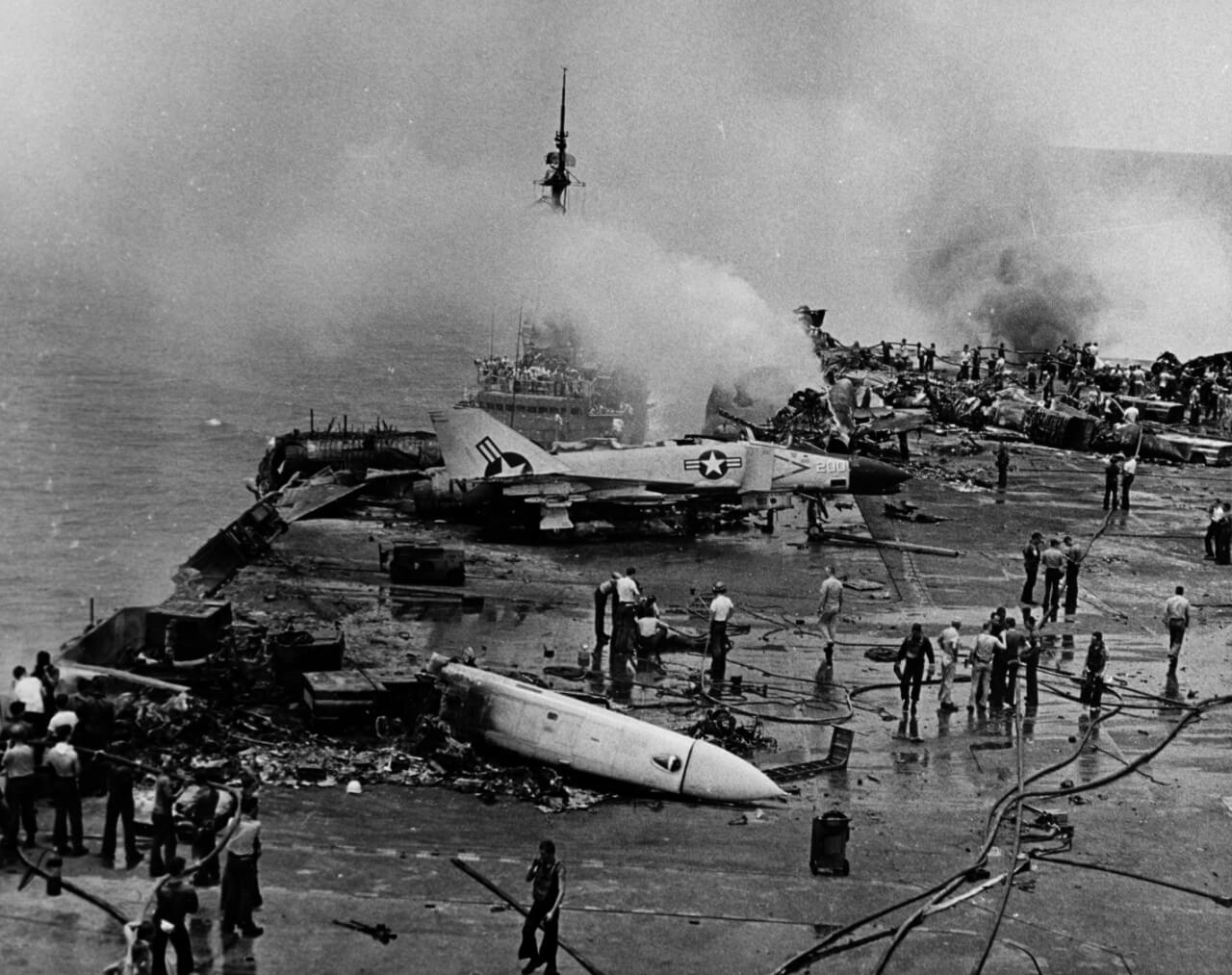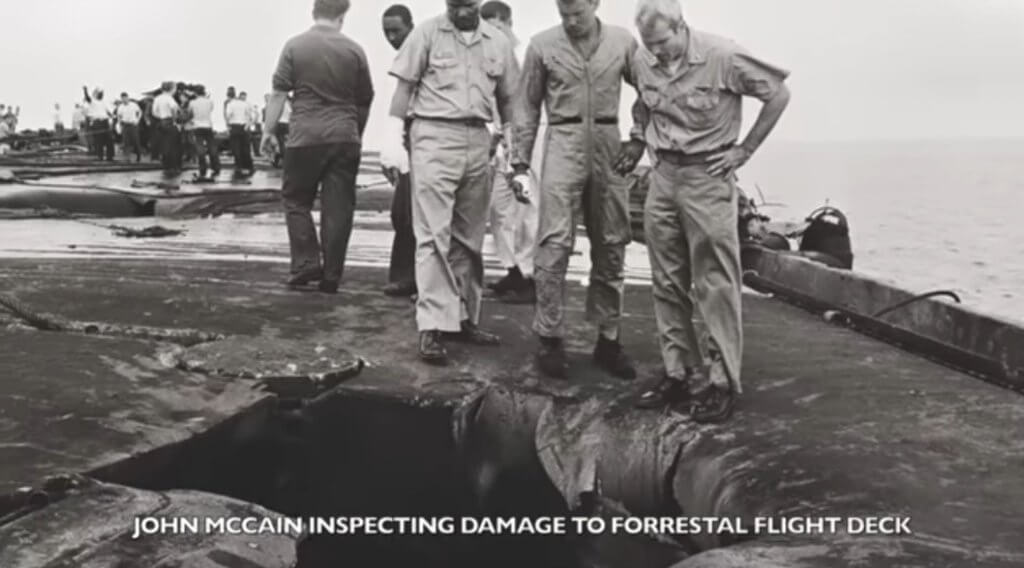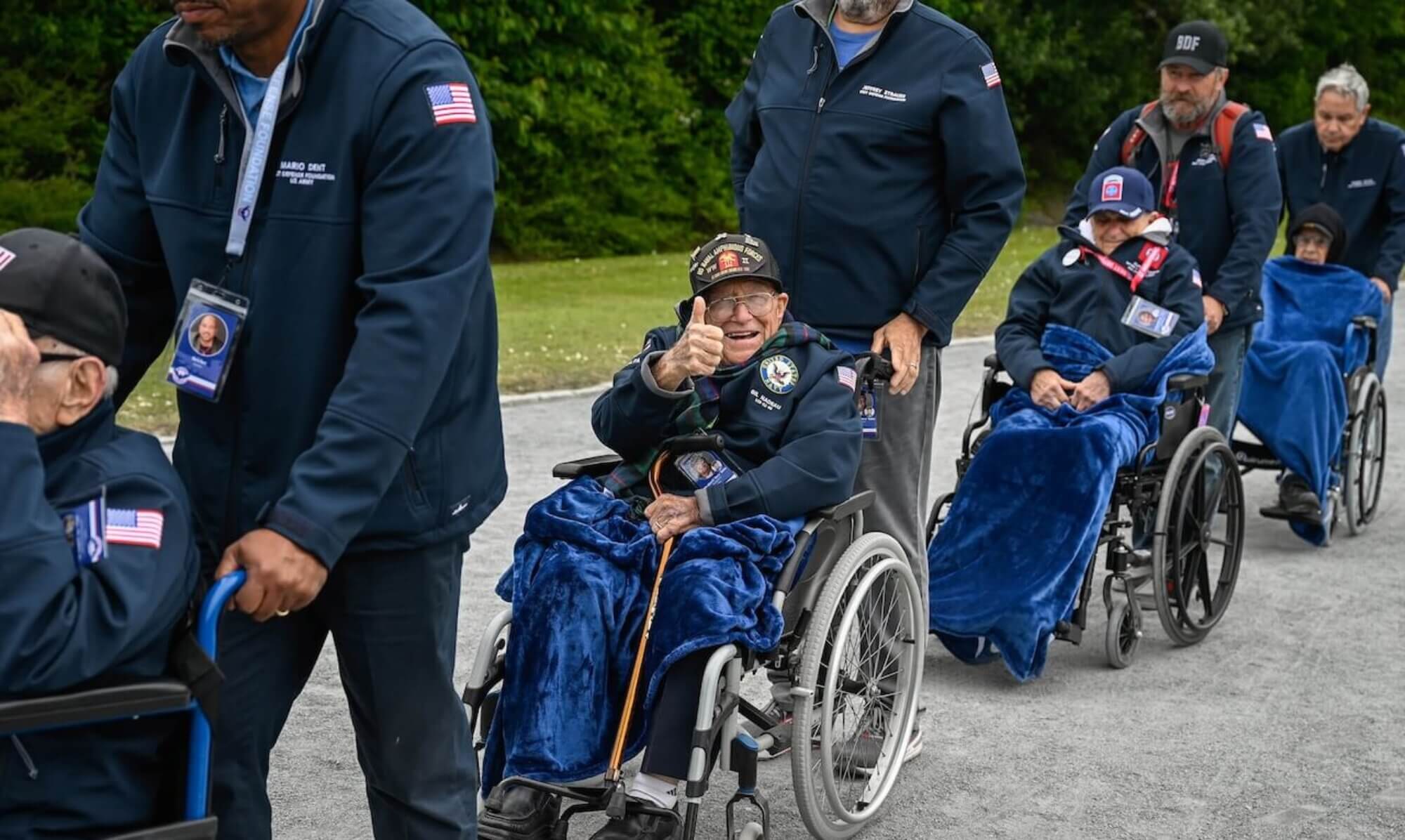

As a former sailor who served on U.S. Navy ships in the 1970s, the images of the USS Forrestal fire are deeply ingrained in my memory. Like many of my fellow sailors, this tragic event serves as a solemn reminder of just how volatile life at sea can be. On July 29, 1967, a devastating fire broke out on the aircraft carrier USS Forrestal (CVA-59) in the Gulf of Tonkin, off the coast of Vietnam. This catastrophe resulted in the deaths of 134 sailors, injured 161 others, and caused extensive damage to the ship and its aircraft. The impact of this event was profound, leading to significant changes in safety protocols, training, and firefighting equipment within the U.S. Navy.
The Incident: A Chain Reaction of Catastrophe
The fire on the USS Forrestal began when an electrical anomaly caused a Zuni rocket to accidentally fire from an F-4 Phantom jet on the flight deck. The rocket struck an armed A-4 Skyhawk, resulting in the explosion of its external fuel tank and the ignition of other ordnance. The flight deck was immediately engulfed in flames, and bombs began to detonate, creating a deadly environment for the crew members battling the blaze.
Heroism Amidst the Inferno
Amidst the chaos, the courage and quick actions of the Forrestal’s crew were nothing short of heroic. Sailors, despite facing extreme heat and continuous explosions, fought relentlessly to control the fire and save their shipmates. The bravery displayed during this catastrophe exemplified the resilience and dedication of U.S. Navy personnel.
John McCain’s Presence and Legacy

Among those aboard the USS Forrestal was Lieutenant Commander John McCain, who was preparing for a mission when the fire began. McCain’s A-4 Skyhawk was one of the aircraft hit by the initial explosion. He narrowly escaped death by climbing out of his burning jet and jumping to safety. His quick actions and subsequent bravery are part of the legacy of that tragic day.
I had the privilege of meeting John McCain when he was a senator, and I have great admiration and respect for him and those like him. His experiences during the Forrestal fire and later as a prisoner of war in Vietnam profoundly shaped his life and character. Sailors like McCain exemplify the courage and resilience that define the U.S. Navy.
In Memoriam
- Chief Farrier: Sacrificed his life to give aviators time to escape their jets before the flames spread
- Crew: Helped shipmates with damage control and aided victims, with over 100 volunteering to donate blood
- Rupertus (DD-851): Assisted the Forrestal crew in fighting the fires
The Aftermath: Lessons Learned
The aftermath of the USS Forrestal fire highlighted critical deficiencies in shipboard safety protocols and firefighting capabilities. The Navy undertook an extensive review of the incident, leading to several crucial changes:
- Enhanced Firefighting Training: The tragedy underscored the need for rigorous firefighting training for all Navy personnel. Firefighting schools and training programs were revamped to ensure that sailors were better prepared to handle similar emergencies.
- Improved Equipment: The fire revealed the inadequacies of the existing firefighting equipment. As a result, the Navy introduced more effective fire suppression systems, better protective gear, and improved firefighting tools.
- Safety Protocols: New safety procedures were implemented to prevent the accidental discharge of weapons and to manage the risks associated with handling ordnance on the flight deck. This included stricter protocols for the storage and handling of explosive materials.
- Damage Control: The Navy emphasized the importance of damage control measures, including the establishment of dedicated damage control teams and the enhancement of damage control training for all personnel.
Lasting Impact on Naval Operations
The USS Forrestal fire had a lasting impact on naval operations and culture. It served as a stark reminder of the inherent dangers of operating an aircraft carrier and the critical importance of preparedness and safety. The lessons learned from this tragedy were incorporated into the Navy’s operational doctrine, improving the overall safety and effectiveness of naval aviation.
Conclusion: Honoring the Fallen and Ensuring Vigilance
As we reflect on the USS Forrestal fire, we honor the memory of the 134 sailors who lost their lives and the many others who were injured. Their sacrifice is a solemn reminder of the risks faced by those who serve in the U.S. Navy. The improvements in safety and training that resulted from this tragedy have undoubtedly saved countless lives in the years since.
The legacy of the USS Forrestal fire is one of resilience, courage, and a commitment to continual improvement. It is a poignant example of how the Navy turns tragedy into a catalyst for positive change, ensuring that future generations of sailors are better protected and prepared. A stronger Navy is built on the lessons of the past, and together, we must remain vigilant to protect our nation and each other.

